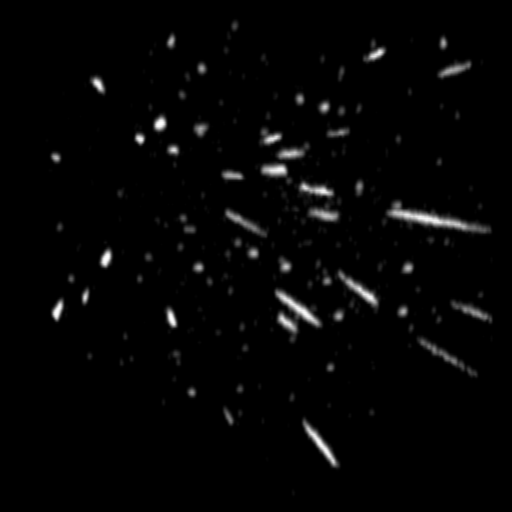This Friday and Saturday the annual Orionid meteor shower is expected to peak with an interstellar fireworks show of violently burning rock as Earth passes through a cloud of space dust left by Halley’s comet. Except this year the Orionid shower isn’t supposed to be exactly dazzling.“It’s not going to knock your socks off this year, but if you are out in the desert or up in the mountains, it is certainly worth a look,” Don Yeomans, manager of NASA’s Near-Earth Object Program Office, told the LA Times.Unless you happen to be up at 5 a.m. in the middle of nowhere on Friday, you can blame the moon for outshining the shower. It will be in its late crescent phase, which is still bright enough to keep the atmosphere from really glowing. Even worse, the moon’s also going to mess with the upcoming Leonids shower in November after wrecking the Perseids shower in August.Because the moon seems hellbent on riffing our meteoric chill, here are some of the best, most awesome meteor showers ever. For full effect, hold your computer screen up to the night sky.The August-arriving Perseids are some of the most enjoyable meteors to watch. They’re fast and numerous, and leave long, persistent streaks, known in the business as ‘trains.’ They’ve been observed for around 2000 years. The meteors themselves are escapees from the comet Swift-Tuttle. NASA astronaut Ron Garan (@astro_ron on Twitter) shot the above photo of a streaking Perseid on August 13 of this year from the International Space Station.The Leonids are one of the biggest annual meteor showers in modern times. The comet that cast off the Leonids’ space dust is Tempel-Tuttle, but are called the Leonids because, from Earth, the seem to appear from the constellation Leo. In 1833’s Leonids shower, astronomers reportedly recorded 14,000 meteors an hour, while 1966 was similarly massive. October’s Orionids are the most prolific meteor shower that originates from Halley’s Comet. As if they couldn’t be any more famous, the Orionid showers are named as such because they tend appear within the Orion constellation when looking from Earth’s surface. The Orionids were key in early 1800s astronomy that pieced together the link between meteor showers and comet dust.
October’s Orionids are the most prolific meteor shower that originates from Halley’s Comet. As if they couldn’t be any more famous, the Orionid showers are named as such because they tend appear within the Orion constellation when looking from Earth’s surface. The Orionids were key in early 1800s astronomy that pieced together the link between meteor showers and comet dust. The Quadrantids are one of the brightest, fastest showers of the year. The peak of the January shower lasts only about 8 hours, as compared to a day or two for other showers. It was first described by Adolphe Quetelet of the Brussels Observatory in 1830.The April Lyrids shower has been observed for at least 2,600 years. That’s mind-bogglng. The Lyrids shower is also known to produce “Lyrid fireballs,” which are meteors large enough to have a shadow and leave a smoke trail.
The Quadrantids are one of the brightest, fastest showers of the year. The peak of the January shower lasts only about 8 hours, as compared to a day or two for other showers. It was first described by Adolphe Quetelet of the Brussels Observatory in 1830.The April Lyrids shower has been observed for at least 2,600 years. That’s mind-bogglng. The Lyrids shower is also known to produce “Lyrid fireballs,” which are meteors large enough to have a shadow and leave a smoke trail. Draconids appear in early October from the northern constellation Draco, and are cast off from Comet Giacobini-Zinner, shown above. Their claim to fame is that they’re some of the slowest meteors known. According to NASA, they stroll into the atmosphere at the “relatively leisurely” pace of 20 km/s. That’s 44,700 mph for all of you counting.
Draconids appear in early October from the northern constellation Draco, and are cast off from Comet Giacobini-Zinner, shown above. Their claim to fame is that they’re some of the slowest meteors known. According to NASA, they stroll into the atmosphere at the “relatively leisurely” pace of 20 km/s. That’s 44,700 mph for all of you counting.
Advertisement
Perseids
Image via NASA/Ron Garan
Leonids
Orionids
Advertisement
Image via
Quadrantids

Image via
Lyrids
Image via Getty Images/NASA
Draconids
